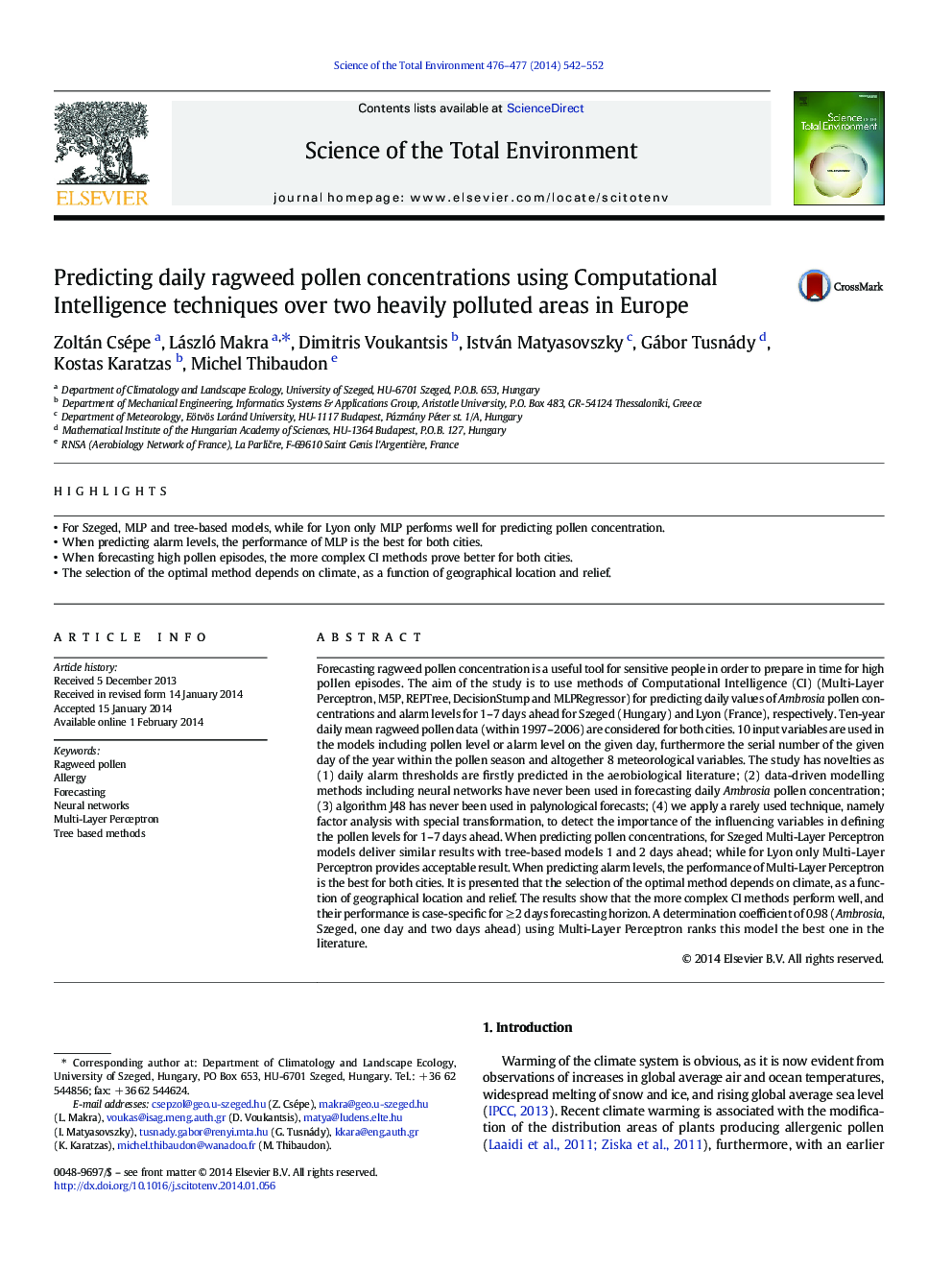| Article ID | Journal | Published Year | Pages | File Type |
|---|---|---|---|---|
| 4428569 | Science of The Total Environment | 2014 | 11 Pages |
•For Szeged, MLP and tree-based models, while for Lyon only MLP performs well for predicting pollen concentration.•When predicting alarm levels, the performance of MLP is the best for both cities.•When forecasting high pollen episodes, the more complex CI methods prove better for both cities.•The selection of the optimal method depends on climate, as a function of geographical location and relief.
Forecasting ragweed pollen concentration is a useful tool for sensitive people in order to prepare in time for high pollen episodes. The aim of the study is to use methods of Computational Intelligence (CI) (Multi-Layer Perceptron, M5P, REPTree, DecisionStump and MLPRegressor) for predicting daily values of Ambrosia pollen concentrations and alarm levels for 1–7 days ahead for Szeged (Hungary) and Lyon (France), respectively. Ten-year daily mean ragweed pollen data (within 1997–2006) are considered for both cities. 10 input variables are used in the models including pollen level or alarm level on the given day, furthermore the serial number of the given day of the year within the pollen season and altogether 8 meteorological variables. The study has novelties as (1) daily alarm thresholds are firstly predicted in the aerobiological literature; (2) data-driven modelling methods including neural networks have never been used in forecasting daily Ambrosia pollen concentration; (3) algorithm J48 has never been used in palynological forecasts; (4) we apply a rarely used technique, namely factor analysis with special transformation, to detect the importance of the influencing variables in defining the pollen levels for 1–7 days ahead. When predicting pollen concentrations, for Szeged Multi-Layer Perceptron models deliver similar results with tree-based models 1 and 2 days ahead; while for Lyon only Multi-Layer Perceptron provides acceptable result. When predicting alarm levels, the performance of Multi-Layer Perceptron is the best for both cities. It is presented that the selection of the optimal method depends on climate, as a function of geographical location and relief. The results show that the more complex CI methods perform well, and their performance is case-specific for ≥ 2 days forecasting horizon. A determination coefficient of 0.98 (Ambrosia, Szeged, one day and two days ahead) using Multi-Layer Perceptron ranks this model the best one in the literature.
